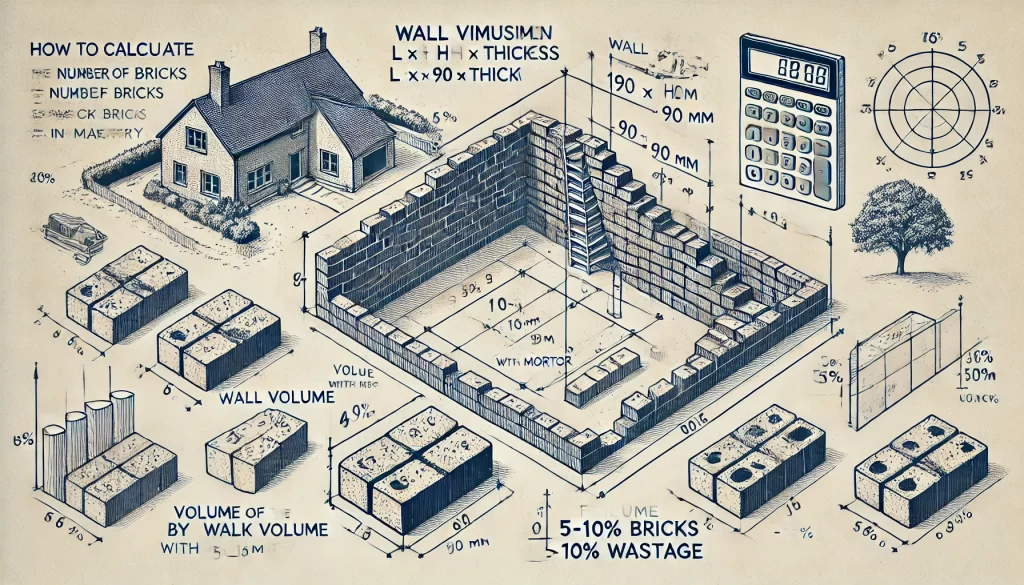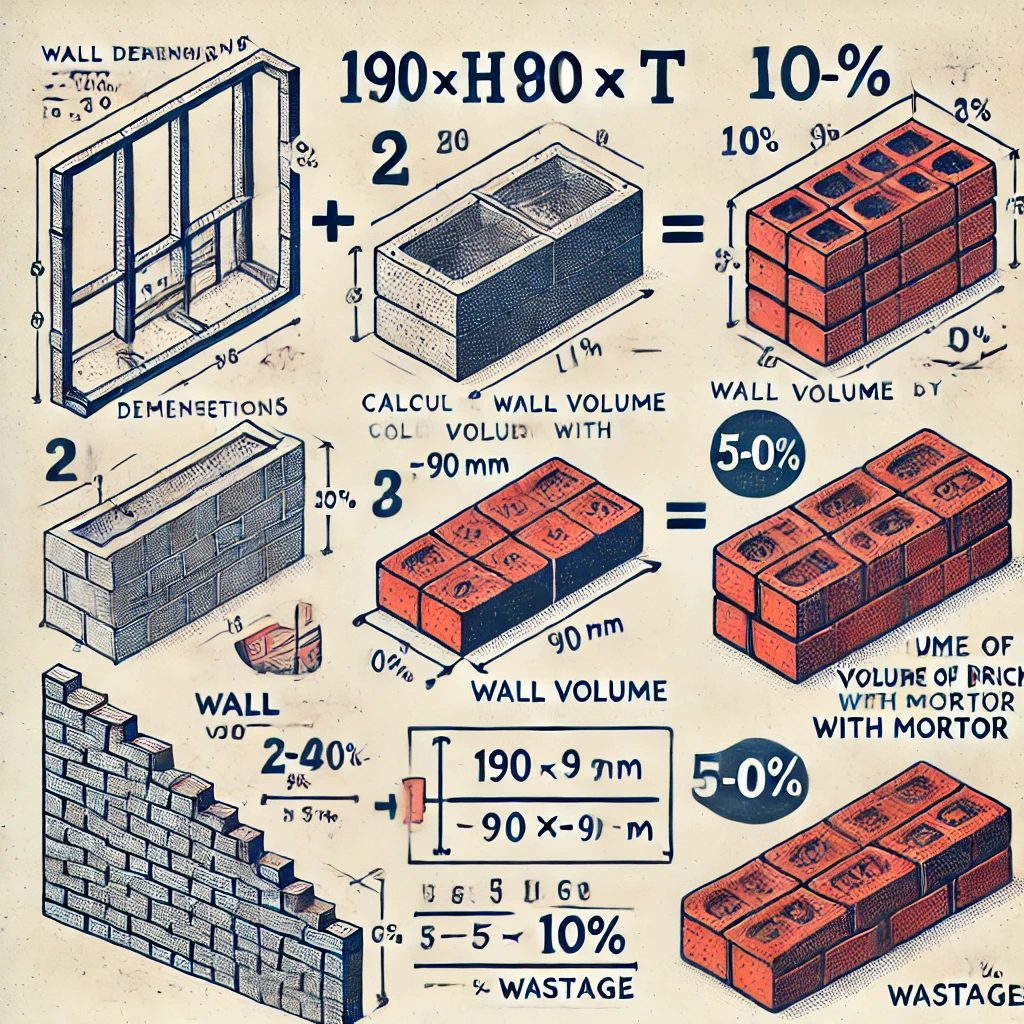When clients plan to build a house, one of the first questions they often ask an engineer or architect is: “What number of bricks will I need?” or “What quantity of cement, sand, or TMT rods should I purchase?” In general, they want to know what quantities of construction materials are to be perched. Then they would ask, “What will be the total cost of the whole of the construction?
In this article, we’ll guide you through the process of estimating the number of bricks required for your construction, taking into account factors like wall thickness, dimensions, and mortar spacing. Understanding these calculations can help you make informed decisions and optimize both time and resources in your project.
How to Calculate the Number of Bricks
To calculate the number of bricks required for masonry work, follow these steps:

1. Determine the Dimensions of the Wall or Structure:
- Length (L), height (H), and thickness (T) of the wall.
- For example, if you’re building a wall that’s 10 meters long, 3 meters high, and 0.23 meters thick, these values will be used in your calculations.
2. Calculate the Volume of the Wall:
The volume of the wall is the product of its length, height, and thickness.
\(\text{Volume of wall} = L \times H \times T\)
Example:
\(\text{Volume of wall} = 10 \, \text{m} \times 3 \, \text{m} \times 0.23 \, \text{m} = 6.9 \, \text{m}^3\)
3. Calculate the Volume of One Brick:
The standard size of a brick can vary by country. A common size (in metric) is 190 mm x 90 mm x 90 mm (without mortar). Convert the dimensions into meters:
\(\text{Length of brick} = 0.19 \, \text{m}, \, \text{Width of brick} = 0.09 \, \text{m}, \, \text{Height of brick} = 0.09 \, \text{m}\)
The volume of one brick:
\(\text{Volume of brick} = 0.19 \times 0.09 \times 0.09 = 0.001539 \, \text{m}^3\)
4. Account for Mortar:
Mortar is typically 10 mm thick between bricks, which increases the size of the masonry unit. The brick size with mortar could be:
\(\text{Length} = 0.2 \, \text{m}, \, \text{Width} = 0.1 \, \text{m}, \, \text{Height} = 0.1 \, \text{m}\)
The volume of one brick with mortar:
\(\text{Volume of brick (with mortar)} = 0.2 \times 0.1 \times 0.1 = 0.002 \, \text{m}^3\)
Also, read: What is Mortar?: Types of Mortars and Their Application
5. Calculate the Number of Bricks:
To find the number of bricks required, divide the total volume of the wall by the volume of one brick (with mortar):
\(\text{Number of bricks} = \frac{\text{Volume of wall}}{\text{Volume of one brick (with mortar)}}\)
Example:
\(\text{Number of bricks} = \frac{6.9 \, \text{m}^3}{0.002 \, \text{m}^3} = 3450 \, \text{bricks}\)
6. Add Wastage:
It’s common to add around 5-10% extra bricks for wastage and breakage. For example:
\(\text{Total bricks} = 3450 \times 1.05 = 3622.5 \, \text{bricks} \approx 3623 \, \text{bricks}\)

Formula in Short:
\(\text{Number of Bricks} = \frac{L \times H \times T}{\text{Volume of Brick (with mortar)}} \times (1 + \text{Wastage percentage})\)
Also, read: Types of Bricks Used in Building Construction: 6 Types of Bricks
![]()







